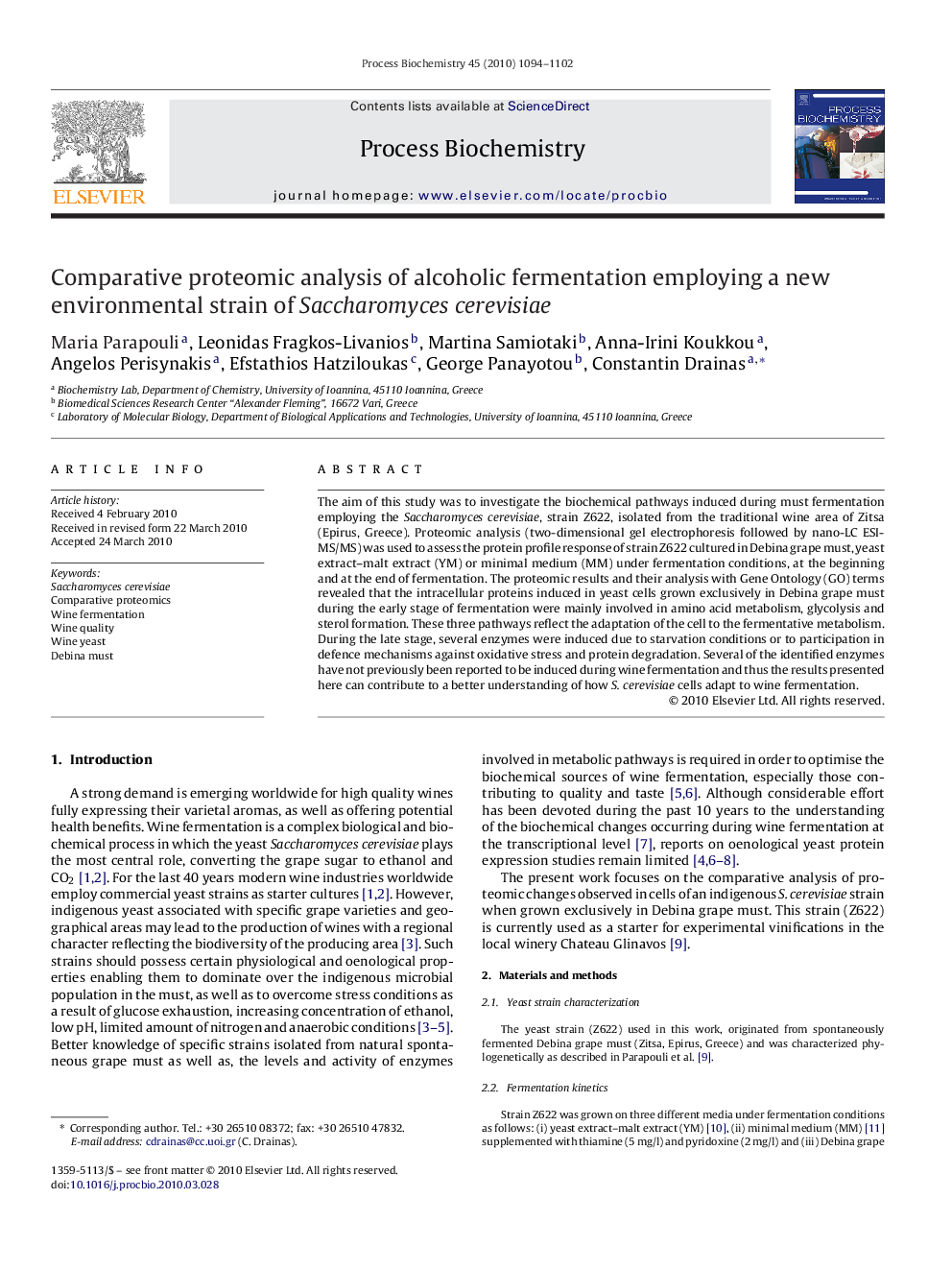| Article ID | Journal | Published Year | Pages | File Type |
|---|---|---|---|---|
| 35183 | Process Biochemistry | 2010 | 9 Pages |
The aim of this study was to investigate the biochemical pathways induced during must fermentation employing the Saccharomyces cerevisiae, strain Z622, isolated from the traditional wine area of Zitsa (Epirus, Greece). Proteomic analysis (two-dimensional gel electrophoresis followed by nano-LC ESI-MS/MS) was used to assess the protein profile response of strain Z622 cultured in Debina grape must, yeast extract–malt extract (YM) or minimal medium (MM) under fermentation conditions, at the beginning and at the end of fermentation. The proteomic results and their analysis with Gene Ontology (GO) terms revealed that the intracellular proteins induced in yeast cells grown exclusively in Debina grape must during the early stage of fermentation were mainly involved in amino acid metabolism, glycolysis and sterol formation. These three pathways reflect the adaptation of the cell to the fermentative metabolism. During the late stage, several enzymes were induced due to starvation conditions or to participation in defence mechanisms against oxidative stress and protein degradation. Several of the identified enzymes have not previously been reported to be induced during wine fermentation and thus the results presented here can contribute to a better understanding of how S. cerevisiae cells adapt to wine fermentation.
